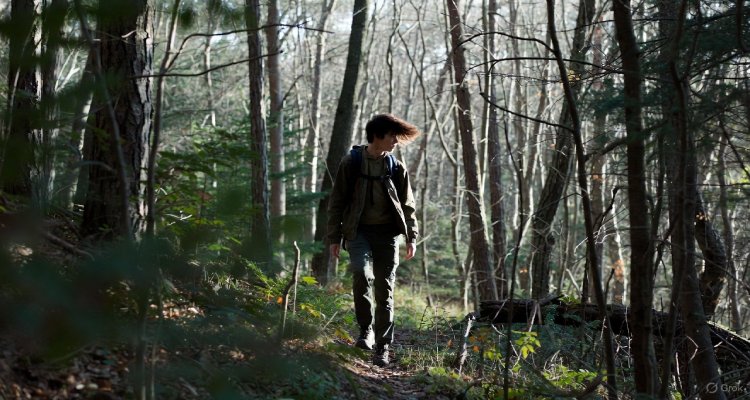The Trees That Talk Through the Internet of Roots
Scientists are uncovering how forests communicate through underground fungal networks—an Internet of Roots that redefines intelligence, climate resilience, and the future of ecology.
Introduction: Whispers Beneath the Forest Floor
Deep within the stillness of forests, a silent conversation pulses through soil and root. Towering trees, ancient and wise, share nutrients, send warning signals, and nurture their offspring—not through sound or sight, but through a vast organic web scientists now call the “Internet of Roots.” This intricate belowground communication network may hold answers to how ecosystems survive fires, droughts, and deforestation—and could reshape our very understanding of intelligence and connectivity in nature.
Context & Background: The Discovery of the Underground Web
The concept of connected trees isn’t just a poetic metaphor; it has deep scientific roots. Over the past two decades, ecologists like Dr. Suzanne Simard have revealed that trees communicate through mycorrhizal networks—symbiotic partnerships between tree roots and fungi. These fungal threads form a subterranean internet that links forests into cooperative systems.
Through these networks, carbon, nitrogen, and water flow between trees. Older “mother trees” share nutrients with saplings shaded from sunlight, ensuring their survival. When danger looms—like insect infestations or diseases—trees send chemical alerts through this network, prompting neighbors to strengthen their defenses.
Recent technological breakthroughs—tiny root sensors, micro-toxin tracers, and soil imaging technologies—have allowed scientists to digitally map this communication, turning what was once myth into measurable science.
Main Developments: From Ancient Networks to Modern Lessons
Today, mycorrhizal research intersects with data science, artificial intelligence, and biotechnology. Environmental engineers at universities in Finland and Japan are developing “eco-sensors” that mimic the fungal communication of these root systems. The goal: to create sustainable soil-monitoring networks that reduce fertilizer waste and predict forest health in real-time.
Meanwhile, climate researchers study how these underground networks help forests store carbon. When trees share carbon through their roots, they modulate forest carbon balance—a crucial component in combating climate change. A study published in Nature Communications (2024) found that connected forests are up to 28% more resilient against drought than isolated ones.
This natural connectivity model is even inspiring biomimetic Internet architecture, where information systems mimic forest networks to become more self-regulating and resilient to failures.
Expert Insight and Public Reaction
According to Dr. Maria Kline, environmental biologist at the University of Vienna, “If the Internet changed how humans communicate, the network of roots once did the same for forests. Understanding it isn’t just about saving trees—it’s about understanding life itself as a cooperative system.”
Public fascination with these “talking trees” has grown rapidly, fueled by documentaries and forest therapy movements. On social media, hashtags like #WoodWideWeb, #EcoIntelligence, and #InternetOfRoots trend alongside global rewilding campaigns. Environmental activists cite this phenomenon as a moral argument for forest protection: cutting down one tree, they argue, silences an entire neighborhood.
Impact & Implications: Lessons for Technology and the Planet
The implications of the Internet of Roots extend beyond ecology. For agriculture, these discoveries could inspire new farming models that rely on cooperative plant systems rather than chemical dependency. For AI researchers, the network offers a natural blueprint for decentralized intelligence—systems that think collectively rather than hierarchically.
At the policy level, understanding communication networks among trees could transform climate restoration programs, promoting mixed-species planting and soil restoration as core strategies. Urban planners are experimenting with “connected green corridors”, where city trees and parks are planted using fungal inoculants to recreate natural root internets, improving air quality and mental well-being.
Yet, challenges remain. Deforestation, soil pollution, and monoculture farming continue to sever these underground links. Without intervention, scientists warn, we risk silencing the forest’s own survival system—a biological web that has quietly sustained Earth for over 400 million years.
Conclusion: Listening to the Forest Again
The story of the Internet of Roots is more than a scientific curiosity—it’s a philosophical mirror. It suggests that cooperation, not competition, may be the foundation of life on Earth. As technology advances, humanity faces a choice: to dominate nature or to learn from it. In the soil’s hidden networks lies an ancient wisdom—a reminder that communication, whether digital or biological, begins with connection and care.
If we listen closely, perhaps we’ll hear the forest speaking again.
Disclaimer: This article is based on verified ecological and scientific research. It is intended for informational and educational purposes and should not replace expert consultation or academic sources for technical study











